#barański
Explore tagged Tumblr posts
Text
LIVE: 60 Jazz nad Odrą (wybrane koncerty)
Wrocław, 24-26.4.2024 Wrocławski festiwal Jazz nad Odrą świętował w roku 2024 swoją 60 edycję. Słuchacze mieli możliwość wysłuchania kilkunastu koncertów, które zawitały do trzech sal koncertowych. Pierwszy dzień to tradycyjnie chwila dla uczestników konkursu na Indywidualność Jazzową im. Wojtka Siwka. Spośród siedmiu finalistów jury wyróżniło nagrodą Grand Prix zespół Mateusz Kaszuba Trio.…

View On WordPress
#Ambrose Akinmusire#Brad Mehldau#Darek Oleszkiewicz#Emmanuel Michael#Joe Sanders#John Hadfield#Jorge Rossy#Jozef Dumoulin#Kit Downes#Leif Berger#Magdalena Zawartko#Marcin Kaletka#Mateusz Kaszuba#Mateusz Kaszuba Trio#Matthieu Michel#Michał Barański#Michał Miśkiewicz#Michał Tokaj#Michel Benita#Norma Winstone#Pablo Held#Pablo Held Buoyancy Band#Percy Pursglove#Piotr Narajowski#Sam Harris#Szymon Mika#Tim Angulo#Tomasz Wendt
0 notes
Text

La fille a la fenêtre : Valentina de Łukasz Barański.
2 notes
·
View notes
Text
CAS post for October for activity by Natalia Wroniecka
For Activity this month I went to a hiphop dance class at 21.10.2024.
Reflection
I have danced for six years but I stopped about 2 years ago. This class which was the first dance class that I have attended in 2 years really thought me how important consitency is in sport. Even if I could learn the choeography, it wasnt easy as it used to be and many moves got me really confused. I had to overcome many challenges as stress and lack of stamina and profeciency in dancing. I had attended this class at Barański Art space which is a dance studio that I am new to. As evidence I uploaded the video showing me (orange sweatpants) dancing the choreography I had previously mentioned.
0 notes
Text
2024 olympics Poland roster
Archery
Wioleta Myszor (Gmina Czernichów)
Athletics
Daniel Sołtysiak (Pomorska)
Oliwer Wdowik (Rzeszów)
Albert Komański (Rzeszów)
Mateusz Borkowski (Starachowice)
Filip Rak (Opole)
Maciej Wyderka (Piekary Śląskie)
Damian Czykier (Białystok)
Krzysztof Kiljan (Łomianki)
Jakub Szymański (Warsaw)
Maher Ben Hlima (Warsaw)
Artur Brzozowski (Nisko)
Kajetan Duszyński (Siemianowice Śląskie)
Maksymilian Szwed (Łódź)
Karol Zalewski (Reszel)
Piotr Lisek (Szamotuły Srabtwo)
Robert Sobera (Wrocław)
Konrad Bukowiecki (Szczytno)
Michał Haratyk (Cieszyn)
Paweł Fajdek (Świebodzice)
Wojciech Nowicki (Białystok)
Marcin Krukowski (Warsaw)
Cyprian Mrzygłód (Gmina Domaniewice)
Dawid Wegner (Nakło Nad Notecią)
Magdalena Niemczyk (Versailles, France)
Aleksandra Formella (Gdynia)
Magdalena Stefanowicz (Bytom)
Ewa Swoboda (Żory)
Martyna Kotwiła (Radom)
Krystsina Tsimanouskaya (Warsaw)
Natalia Kaczmarek (Drezdenko)
Justyna Święty-Ersetic (Racibórz)
Anna Wielgosz (Nisko)
Klaudia Kazimierska (Włocławek)
Weronika Lizakowska (Kościerzyna)
Aleksandra Płocińska (Piaseczno)
Pia Skrzyszowska (Warsaw)
Alicja Konieczek (Zbąszyń)
Aneta Konieczek (Zbąszyń)
Kinga Królik (Pabianice)
Anastazja Kuś (Olsztyn)
Alicja Wrona-Kutrzepa (Lublin)
Aleksandra Lisowska (Braniewo)
Angelika Mach (Warsaw)
Katarzyna Zdziebło (Mielec)
Marika Popowicz-Drapała (Gniezno)
Olga Chojecka (Siedlce)
Mariya Zhodzik (Baranavichy, Belarus)
Nikola Horowska (Gmina Wolsztyn)
Klaudia Kardasz (Białystok)
Daria Zabawska (Białystok)
Malwina Kopron (Puławy)
Anita Włodarczyk (Rawicz)
Maria Andrejczyk (Suwałki)
Adrianna Sułek-Schubert (Bydgoszcz)
Basketball
Adrian Bogucki (Leszno)
Filip Matczak (Zielona Góra)
Michał Sokołowski (Warsaw)
Przemysław Zamojski (Elbląg)
Boxing
Mateusz Bereźnicki (Szczecin)
Damian Durkacz (Knurów)
Julia Szeremeta (Chełm)
Aneta Rygielska (Toruń)
Elżbieta Wójcik (Karlino)
Canoeing
Mateusz Polaczyk (Limanowa)
Grzegorz Hedwig (Nowy Sącz)
Wiktor Głazunow (Gorzów Wielkopolski)
Przemysław Korsak (Gorzów Wilkopolski)
Jakub Stepun (Trzcianka)
Katarzyna Szperkiewicz (Olsztyn)
Klaudia Zwolińska (Nowy Sącz)
Dorota Borowska (Nowy Dwór Mazowiecki)
Sylwia Szczerbińska (Białystok)
Dominika Putto (Mrągowo)
Martyna Klatt (Poznań)
Helena Wiśniewska (Bydgoszcz)
Karolina Naja (Tychy)
Anna Puławska (Mrągowo)
Adrianna Kąkol (Kraków)
Climbing
Aleksandra Kałucka (Tarnów)
Aleksandra Mirosław (Lublin)
Cycling
Stanisław Aniołkowski (Warsaw)
Michał Kwiatkowski (Chełmża)
Mateusz Rudyk (Oława)
Alan Banaszek (Warsaw)
Krzysztof Łukasik (Warsaw)
Marta Lach (Gmina Osiek)
Kata Niewiadoma (Limanowa)
Agnieszka Skalniak-Sójka (Krynica-Zdrój)
Marlena Karwacka (Sławno)
Nikola Sibiak (Darłowo)
Urszula Łoś (Pruszków)
Daria Pikulik (Darłowo)
Wiktoria Pikulik (Darłowo)
Paula Gorycka (Kraków)
Diving
Robert Łukaszewicz (Rzeszów)
Equestrian
Jan Kamiński (Milanówek)
Adam Grzegorzewski (Łódź)
Dawid Kubiak (Tomaszów Mazowiecki)
Maksymilian Wechta (Poznań)
Kata Milczarek-Jasińska (Warsaw)
Aleksandra Szulc (Łódź)
Sandra Sysojeva (Warsaw)
Gorza Korycka (Warsaw)
Robert Powała (Trzebiatów)
Wiktoria Knap (Zielona Góra)
Fencing
Jan Jurkiewicz (Toruń)
Michał Siess (Gdańsk)
Adrian Wojtkowiak (Poznań)
Andrzej Rządkowski (Wrocław)
Alicja Klasik (Rybnik)
Renata Knapik-Miazga (Tarnów)
Martyna Swatowska-Wenglarczyk (Szczecin)
Aleksandra Jarecka (Kraków)
Martyna Jelińska (Toruń)
Hanna Łyczbińska (Toruń)
Julia Walczyk-Klimaszyk (Warsaw)
Martyna Synoradzka (Poznań)
Golf
Adrian Meronk (Wrocław)
Judo
Adam Stodolski (Warsaw)
Piotr Kuczera (Rybnik)
Angelika Szymańska (Włocławek)
Beata Pacut-Kłoczko (Warsaw)
Pentathlon
Kamil Kasperczak (Warsaw)
Łukasz Gutkowski (Warsaw)
Natalia Dominiak (Warsaw)
Anna Maliszewska (Zielowna Góra)
Rowing
Fabian Barański (Włocławek)
Mateusz Biskup (Gdańsk)
Dominik Czaja (Kraków)
Mirosław Ziętarski (Golub-Dobrzyń Powiat)
Martyna Radosz (Bydgoszcz)
Katarzyna Wełna (Stanisławice)
Sailing
Maks Żakowski (Koszalin)
Michał Krasodomski (Warsaw)
Szymon Wierzbicki (Poznań)
Paweł Tarnowski (Gdynia)
Dominik Buksak (Gdynia)
Agata Barwińska (Iława)
Maja Dziarnowska (Gdańsk)
Julia Damasiewicz (Poznań)
Sandra Jankowiak (Szamotuły)
Aleksandra Melzacka (Gdynia)
Shooting
Tomasz Bartnik (Warsaw)
Maciej Kowalewicz (Olsztyn)
Aleksandra Pietruk (Białystok)
Julia Piotrowska (Gdynia)
Natalia Kochańska (Zielona Góra)
Aneta Stankiewicz (Bydgoszcz)
Klaudia Breś (Bydgoszcz)
Swimming
Piotr Woźniak (Olsztin)
Adrian Jaśkiewicz (Warsaw)
Piotr Ludwiczak (Kolobrzeg)
Jakub Majerski (Katowice)
Krzysztof Chmielewski (Warsaw)
Michał Chmielewski (Warsaw)
Ksawery Masiuk (Tarnów)
Jan Kałusowski (Łódź)
Mateusz Chowaniec (Katowice)
Dominik Dudys (Gmina Lipowa)
Bartosz Piszczorowicz (Kalisz)
Kamil Siederadzki (Siemianowice Śląskie)
Kacper Stokowski (Warsaw)
Kata Wasick (Kraków)
Kornelia Fiedkiewicz (Legnica)
Adela Piskorska (Oleśnica)
Laura Bernat (Lublin)
Dominika Sztandera (Dzierżoniów)
Zuzanna Famulok (Katowice)
Julia Maik (Kalisz)
Paulina Peda (Chorzów)
Table tennis
Miłosz Redzimski (Warsaw)
Katarzyna Węgrzyn (Warsaw)
Anna Węgrzyn (Warsaw)
Zuzanna Wielgos (Warsaw)
Natalia Bajor (Warsaw)
Tennis
Magdalena Fręch (Łódź)
Magda Linette (Poznań)
Iga Świątek (Raszyn)
Alicja Rosolska (Warsaw)
Triathlon
Roksana Słupek (Bydgoszcz)
Volleyball
Michał Bryl (Łódź)
Bartosz Łosiak (Jastrzębie-Zdrój)
Łukasz Kaczmarek (Krotoszyn)
Bartosz Kurek (Wałbrzych)
Wilfredo León (Lublin)
Aleksander Śliwka (Jawor)
Grzegorz Łomacz (Ostrołęka)
Jakub Kochanowski (Giżycko)
Kamil Semeniuk (Kędzierzyn-Koźle)
Paweł Zatorski (Łódź)
Marcin Janusz (Nowy Sącz)
Tomasz Fornal (Kraków)
Bartłomiej Bołądź (Krzyż Wielkopolski)
Norbert Huber (Brzozów)
Maria Stenzel (Kościan)
Klaudia Alagierska (Milanówek)
Agnieszka Korneluk (Poznań)
Magdalena Stysiak (Gmina Wieluń)
Martyna Łukasik (Gdańsk)
Aleksandra Szczygłowska (Elbląg)
Joanna Wołosz (Elbląg)
Martyna Czyrniańska (Krynica-Zdrój)
Malwina Smarzek (Łask)
Katarzyna Wenerska (Świecie)
Natalia Mędrzyk (Lębork)
Magdalena Jurczyk (Dukla)
Weightlifting
Weronika Zielińska-Stubińska (Biała Podlaska)
Wrestling
Zbigniew Baranowski (Białogard)
Robert Baran (Jarocin)
Arkadiusz Kułynycz (Miastko)
Anhelina Lysak (Warsaw)
Wiktoria Chołuj (Białogard)
#Sports#National Teams#Poland#Celebrities#Races#France#Belarus#Basketball#Fights#Boxing#Boats#Animals#Golf#Tennis
0 notes
Text
Film after film: Kobieta z prowincji (A Woman from the Provinces, dir. Andrzej Barański, 1984)

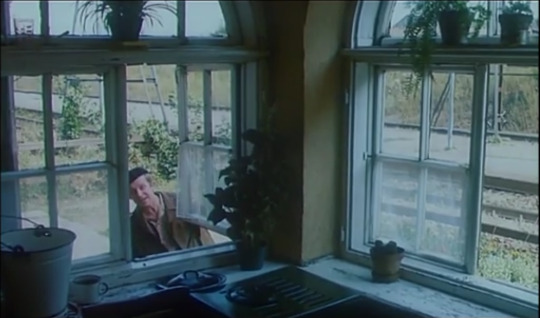
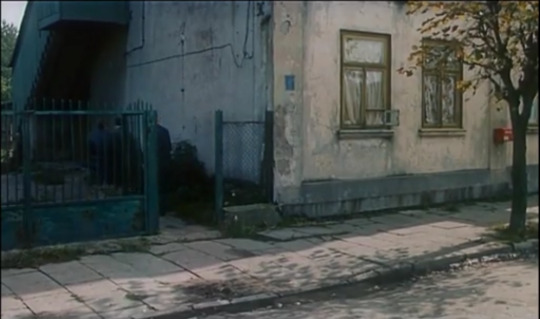




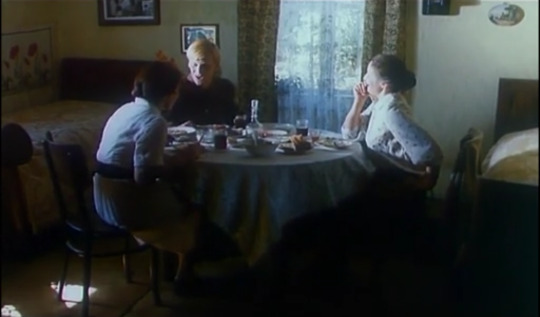



This time-jumping and overwhelmingly morose film about the title's immensely Catholic woman is one of Dałkowska's two big lead film roles. In this one, she chews the scenery, portraying the slightly condescending and sentimental vision of the communist Polish countryside throughout several decades. It's a depressing picture also because of the poor audiovisual quality: the film came out shortly after Martial Law in Poland, during the peak time of the economic crisis.
#filmafterfilm#kobieta z prowincji#andrzej baranski#the 1980s#ewa dalkowska#bozena dykiel#ryszarda hanin#halina wyrodek#jan jankowski#kazimierz wichniarz#edward linde-lubaszenko#hanna stankowna#polish film
0 notes
Photo
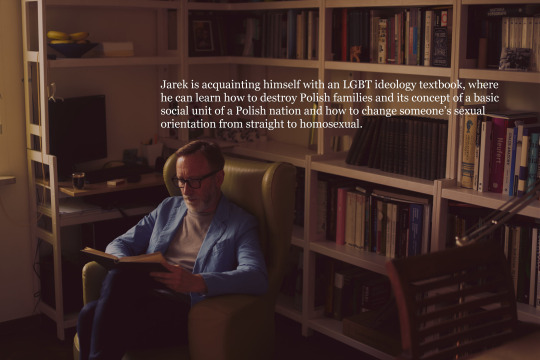
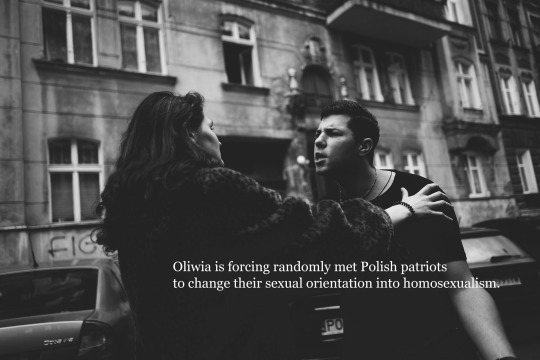
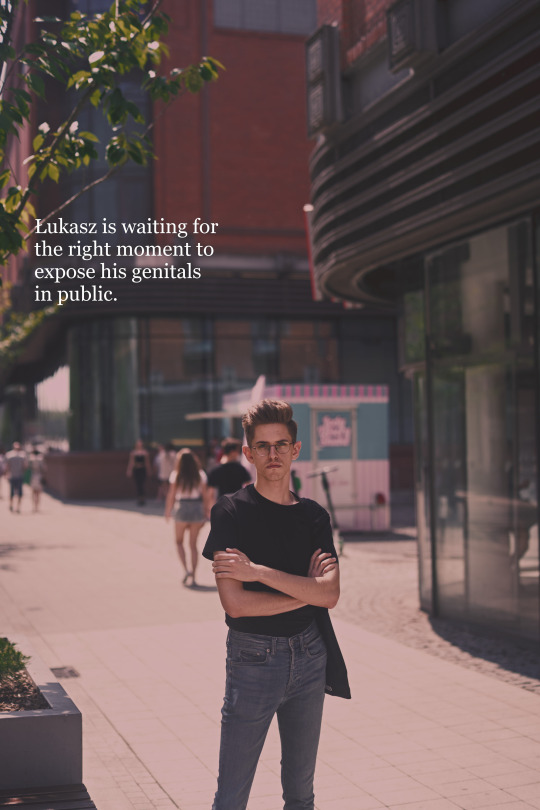



PROJECT: POLAND IS A TOLERANT COUNTRY, AFTER ALL by PAWEŁ BARAŃSKI
After a long period of government in Poland, not only supporting but also preaching harmful and misleading propaganda about the LGBT community, manifestations of hate of LGBT people reached their climax when the Polish president stated that "LGBT people are not people, but ideology," and few of the politicians of the leading political party, Law and Justice, stated that LGBT people are less than "normal" human beings. The concept of the project and the descriptions are not a product of my imagination - they reflect the true, real views that are held and proclaimed by many right-wing activists, including many politicians from the leading party of the polish government.
Paweł Barański - born in 88, taking pictures since around 5 years. Moved from fashion into more conceptual work, and now would like to merge the two into one, creating fashion photography that's socially engaged. Plans to apply on Itf in Opava next year.
http://www.pawelbaranski.com/
#pawel baranski#paweł barański#pawelbaranski#baranquilla#barański#fresh from poland#ffp#poland#tolerance#lgbt#human rights#pis#conceptual#photography#photo#art#contemporary art#contemporary polish photography#polish art#gay#lesbian#queer#statement#project#photography series#projects
8 notes
·
View notes
Photo

Wystawa fotografii Księżycowy flis z Krakowa do Gdańska Wernisaż: 1.10 godz. 17:00, Hol Kamienny Urzędu Miasta Krakowa
Zapraszamy serdecznie na otwarcie wystawy fotografii autorstwa Stanisława Barańskiego, Cezarego Ciszewskiego, Tomasza Gotfryda i Bartolomeo Koczenasza pt. „Księżycowy flis z Krakowa do Gdańska.”
„Tak oto historia Wisły i jej tradycja, księżyc i sztuka, woda i jej siła, podróż i jej opowieściotwórcza moc – spotkały się za sprawą twórczej pasji, by zrekonstruować ale i przedstawić na nowo mit. Mit Wisły – rzeki pięknej i historycznej, a jednocześnie słabo znanej dla większości Polaków. Mit ten chce nie tylko opowiadać o tym co było, ale także kreować. Chtoniczno-lunarna wyprawa może przecież otworzyć nowy rozdział w opowieści o nieco zapomnianej największej rzece w naszej części kontynentu.” Jan Barański
Opowieść o wyprawie będzie prezentowana na wystawie w UMK – Plac Wszystkich świętych 3-4, w Holu Kamiennym w dniach od. 1. do 15. października. Organizator: CSW Wiewiórka Współpraca: WL 4 - Mleczny Piotr, Stocznia Cesarska, Fundacja Sztuk Wizualnych, Jan Barański
Projekt był współfinansowany ze środków Miasta Krakowa.
#wystawa#bartolomeo koczenasz#dar krakowian dla pomorzan#csw wiewiórka#sztuka#art#gotfryd#ciszewski#barański
1 note
·
View note
Photo

Oremus
10 notes
·
View notes
Photo


Nad rzeką, której nie ma Barański 1991
1 note
·
View note
Text



"The Late Show with Stephen Colbert": January 19, 2022
42 notes
·
View notes
Photo
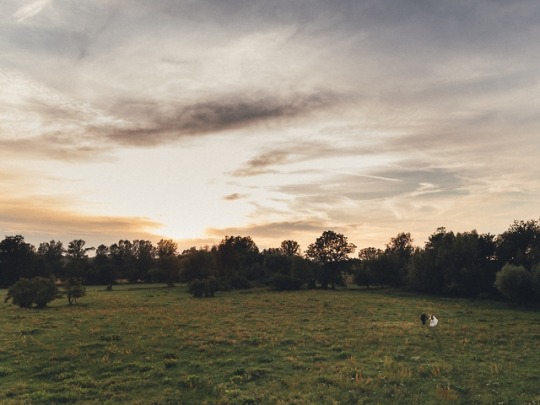


11.08.2018
© KORE images
Website / Facebook
#photography#paweł barański#kore images#alrauna wedding#personal#mylove#love#wedding#wedding photography#long hair#willow tree#countryside#tradition#fotografia ślubna#ślub#polska#poland#marriage#married couple#traditional gender roles#revolt against the modern world#© Alrauna#me
31 notes
·
View notes
Text
Piotr Schmidt International Sextet „Hearsay”
SJ Recrods, 2023 Piotr Schmidt przyzwyczaił nas do regularnego prezentowania nowych nagrań. Nie inaczej jest i w bieżącym roku. Z końcem czerwca posłuchać będzie można kolejnego wydawnictwa firmowanego przez trębacza. Podobnie do innych albumów Piotra Schmidta mamy do czynienia z nieco odmienną propozycją niż przy poprzedniej płycie. Po nagraniach komedowskich, które poznaliśmy w roku 2022 tym…

View On WordPress
#Bartosz Pieszka#David Doruzka#Harish Raghavan#Jonathan Barber#Kestutis Vaiginis#Michał Barański#Paweł Tomaszewski#Piotr Schmidt#Sebastian Kuchczyński#SJ Records
0 notes
Text
Nie żyje 44-letni dziennikarz radiowy. Adam Barański pracował w Radiu RAM i Radiu Wrocław
Polski dziennikarz, związany z Radiem RAM i Radiem Wrocław 44-latek, zmarł nagle 24 stycznia 2023 roku. Jak można znaleźć w medialnych doniesieniach, Adam Barański dołączył do koleżanek i kolegów z branży. Między innymi św. pamięci Moniki Jaworskiej z Radia RAM, która odeszła po ciężkiej chorobie w zeszłym roku, czy Mariusz Prasał z Radia Wrocław, którego zaginięcie zostało zgłoszone przez…

View On WordPress
0 notes
Photo


The Pitfalls of “Charismatic Archaeology” - Part One: What’s in a Name?
All right, as promised, we’re going to take a look at the phenomenon of “charismatic archaeology” (Munawar 2017, 41) as it applies to the so-called Arch of Triumph in Palmyra, which was destroyed by Islamic State militants in 2015 and whose modern cultural context has seemingly superseded its archaeological context in the years since. Because there’s a lot to go over here, I’m going to have to split this up into a few parts. But the main takeaway of this series is that this arch—or tripylon—is still fascinating, even if it isn’t necessarily as ‘Roman’ as we are led to believe and that branding it as such does a disservice to the local Palmyrene builders responsible for its innovative construction in the late second to early third centuries AD (but more on that in later installments).
We already encounter an issue with the classification of this monument as a triumphal arch. Once it was torn down by the Islamic State in October 2015, the tripylon was introduced to the public on a global scale. In their reporting, numerous international news outlets used this term to describe the structure. However, this inaccurate classification pre-dates the arch’s destruction: my thesis advisor told me that when she last visited Palmyra in 2005, the archaeological park guided tourists to the monument and the adjacent section of the city’s Great Colonnade with a sign that read “Triumph Arc (sic) and the Long Street.” That said, the vast majority of the archaeological literature that was written prior to 2015 more accurately designates it as simply a monumental arch or, more commonly in the German-speaking world, a tripylon.
Other common misattributions the monumental arch is given are those of “Hadrian’s Arch/Gate” and the “Arch of Septimius Severus,” though the former is more often a fixture in the German-speaking world (where it’s called the Hadrian Bogen or Hadrianstor). In AD 129/130, Hadrian did himself travel to Palmyra, and during his stay, he granted the city his name (Hadriana Palmyra; Browning 1979, 27). And while it is true that there was an uptick in monumental civic construction and ‘Romanization’ in the city afterwards, the tripylon had not begun to be built until roughly the late Antonine period, around AD 175/180 (Barański 1995, Fig. 1; Tabaczek 2001, 128), so it could not have feasibly been built for Hadrian (in contrast to Hadrian’s Arch in Gerasa, Jordan). Similarly, this start date places its chronology too early to have been built for Septimius Severus, either, as his reign lasted from AD 193–211. That said, a number of scholars do date its construction to his reign or to post-212 more broadly (e.g. Browning 1979, 88; Burns 2017, 245; or Will 1983, 74). However, in doing so, they fail to take into consideration that a structure as large and complicated as the tripylon (more on that later) would have taken years and years to complete, and it was most likely finished sometime in the late Severan period (Tabaczek 2001, 38. 130). Therefore, any commemorative/honorific purpose for this arch is called into question (though statues to Odenathus and his family were placed in niches in the central passageway well after its initial construction in the mid-late 3rd century AD; Burns 2017, 245).
The monument’s designation as a ‘triumphal’ arch or the Arch of Hadrian/Septimius Severus immediately brings it firmly into the realm of ‘Roman’ archaeology, but naming it as such ignores the tripylon’s indigenous Palmyrene context, which in itself tells a much richer story than its apparent association with the Roman Empire. It should be stressed that the term ‘triumphal arch’ was seldom used in antiquity (Cassibry 2018, 246) and that scholars from over a century ago had even expressed the need to use caution when defining these monuments as such (Densmore Curtis 1908, 27). Not only does this term signal the ‘Romanness’ of these structures, but it tends to evoke a sense of particular importance or gravitas to the modern layperson on account of how modern Western powers have adapted the architectural form and used it to express their own “cultural statement,” whether at home or abroad in colonized territories (e.g. the Arc de Triomphe in Paris or the Gateway of India in Mumbai; Ball 2016, 286).
In reality, the eastern Roman territories of Syria and Provincia Arabia have no known ‘true’ triumphal arches, such as those that we’d associate with the city of Rome itself (e.g. the Arch of Septimius Severus or the Arch of Constantine; Ball 2016, 286), but there are three known commemorative/honorific arches to the emperors Trajan (Dura Europos) and Hadrian (Jerusalem and Gerasa; Segal 1997, 131). The point of such monuments was to serve as imperial propaganda “in Wort und Bild” (“in word and image”; Kader 1996, 184). As we will see in later parts of this series, this was not necessarily the case where Palmyra’s tripylon is concerned.
Speaking of cultural statements and propaganda, it is also possible that the concept of triumph was used to the advantage of the Institute for Digital Archaeology of Oxford and Harvard Universities when it decided to use digital methodologies to create a physical reconstruction of the tripylon in 2016 (and believe me, there will be an entire separate post about everything that was wrong with this replica). The IDA’s branding of the tripylon as such in the wake of the Islamic State’s retreat from Palmyra may have delivered a different kind of political message in the sense that the arch and its subsequent reconstruction could represent a triumph of the Syrian people and their cultural heritage over the militants and their wanton destruction of it—perhaps as a 21st-century parallel to Zenobia’s liberation of Palmyra from the Roman Empire (Munawar 2019, 152). Whatever the reason, the emphasis on the monument’s charismatic ‘triumphal’ nature obfuscates its ancient urbanistic context, which will be discussed more in detail in the next part of this series.
Thanks for reading!
Works Cited:
W. Ball, Rome in the East: The Transformation of an Empire, 2nd Edition (London 2016).
M. Barański, The Great Colonnade of Palmyra Reconsidered, Aram Periodical 7(1), 1995, 37–46.
R. Burns, Origins of the Colonnaded Streets in the Cities of the Roman East (Oxford 2017).
I. Browning, Palmyra (Park Ridge 1979).
K. Cassibry, Reception of the Roman Arch Monument, AJA 122 (2), 2018, 245–275.
C. Densmore Curtis, Roman Monumental Arches (New York 1908).
I. Kader, Propylon und Bogentor. Untersuchungen zum Tetrapylon von Latakia und anderen frühkaiserzeitlichen Bogenmonumenten im Nahen Osten (Mainz am Rhein 1996).
N. Munawar, Reconstructing Cultural Heritage in Conflict Zones: Should Palmyra be Rebuilt?, EX NOVO Journal of Archaeology 2, 2017, 33–48.
N. Munawar, Competing Heritage: Curating the Post-Conflict Heritage of Roman Syria, Bulletin - Institute of Classical Studies 62(1), 2019, 142–165.
A. Segal, From Function to Monument: Urban Landscapes of Roman Palestine, Syria and Provincia Arabia (Oxford 1997).
M. Tabaczek, Zwischen Stoa und Suq. Die Säulenstraßen im Vorderen Orient in römischer Zeit unter besonderer Berücksichtigung von Palmyra (Diss. University of Cologne 2001).
E. Will, Le développement urbain de Palmyre, Syria 60, 1983, 69–81.
Image Source: x (the first is from a PowerPoint I presentation I gave in January)
#archaeology#classical archaeology#syrian archaeology#palmyra#ancient history#ancient rome#syria#mod s#the irony is not lost on me that i'm tagging this as classical/roman archaeology
76 notes
·
View notes
Text
Muszę sobie wymyślić
Dzisiaj rano znowu wstałem i męczy mnie ciągłe wstawanie z łóżka. Lepiej gdybym nie kładł się wcale. Sen męczy mnie bardzo a każdemu meblowi czegoś brakuje. Później jest –gwizdek czajnika i obietnica że to ostatni raz a jutro kupię elektryczny. Mam w domu bezprzewodowy telefon i męczą mnie znajomi którzy dzwonią z samego rana i mówią że już południe więc wstaję i siedzę z papierosem który jest natchnieniem jak brak wódki kiedy masz ochotę a że właśnie mam więc wychodzę „pod jaszczury” . I siedzę i oni też przyszli i siedzą. Odbywam z nimi pseudopoważne rozmowy o egzystencjalizmie. Dzisiaj muzyka na żywo. Jest nieźle.-- Kolejne piwo. Cichy skręt z przyjaciółmi--.Rozmowy o sztuce. Już prawie świta więc znajomy który ma mocną głowę i uważa się za przyjaciela odprowadza mnie do domu i mówi że kiedyś muszę do niego wpaść bo nie ma to jak rozmowa o poezji przy wódce świecach i telewizorze. Kładę się spać i wymyślam sobie żonę córeczkę psa i lepsze życie.
Paweł Barański
2 notes
·
View notes
Video
tumblr
#463 || Anna Andrzejewska / 25 / Contemporary / Ballet & Tomasz Barański / 29 / Ballroom Jazz | Choreography by Paweł Michno | «Goodbye My Lover» by James Blunt SYTYCD Poland Season 5 (2010) | Top 6 Week Top 500 List | Intra-Seasonal Placement: #2 • PO5 | Direct Link
I could gush over James Blunt and this song, but I already did in another set, so I’ll spare you that. It’s another maudlin break-up routine, performed in pajamas and yet it feels almost iconic in a sense. There’s a clarity in this routine that made this instantly memorable for me, be it the bright red couch or the succession of one stand-out lift or jump after another. Oh, and btw, that’s my favorite guy and favorite girl that season finally dancing together for the first (and only) time.
#SYTYCD Poland#SYTYCD#So You Think You Can Dance#James Blunt#Goodbye My Lover#TOp 500#PO5#Anna Andrzejewska#Tomasz Barański#videos#Pawel Michno#PO5T6#2010
1 note
·
View note